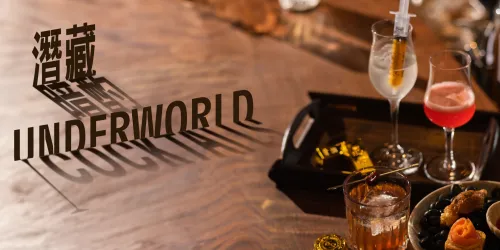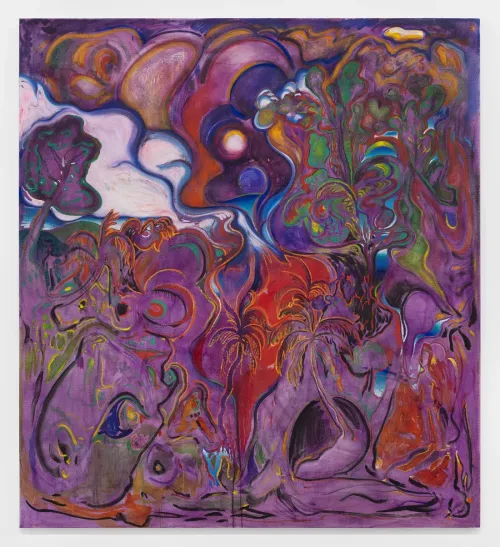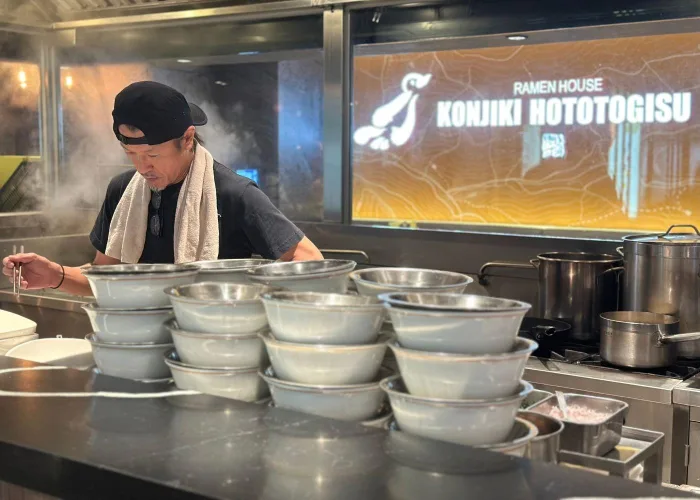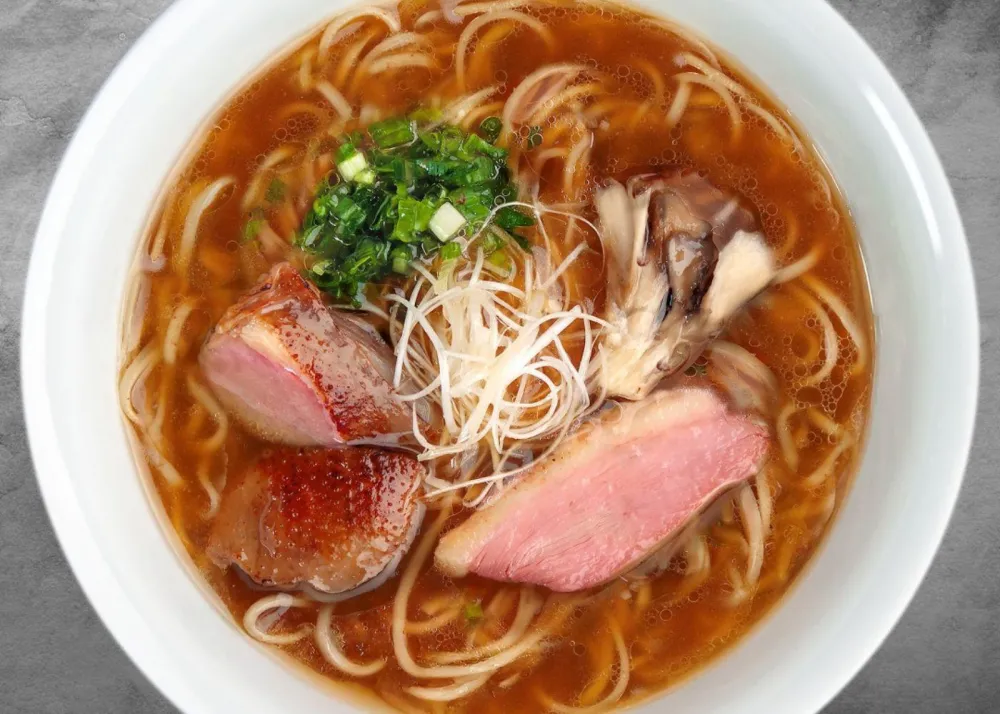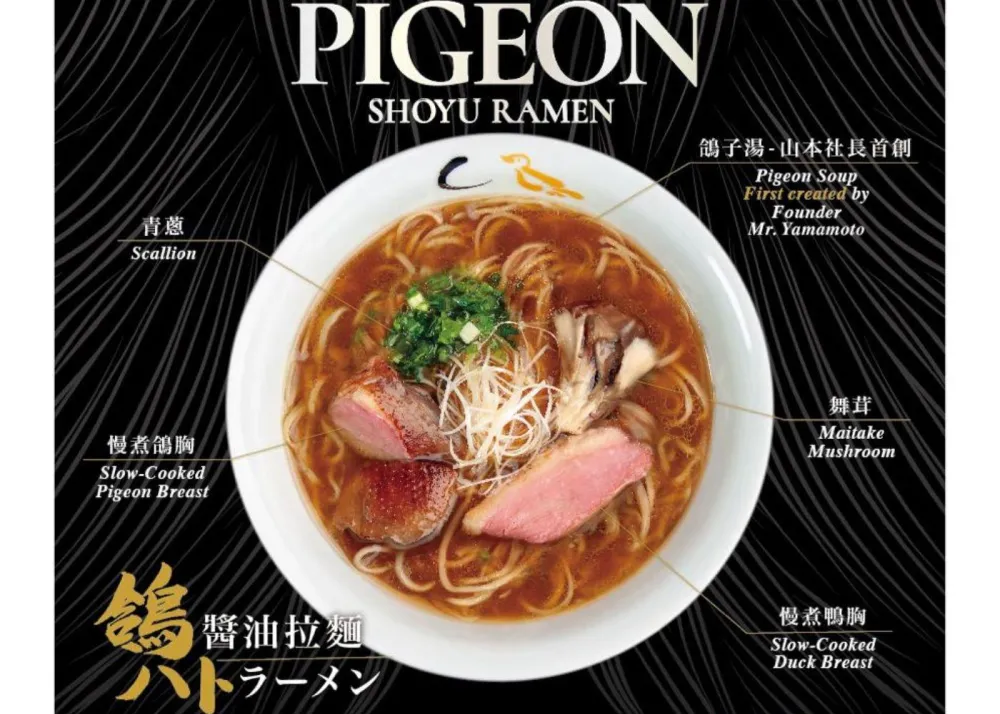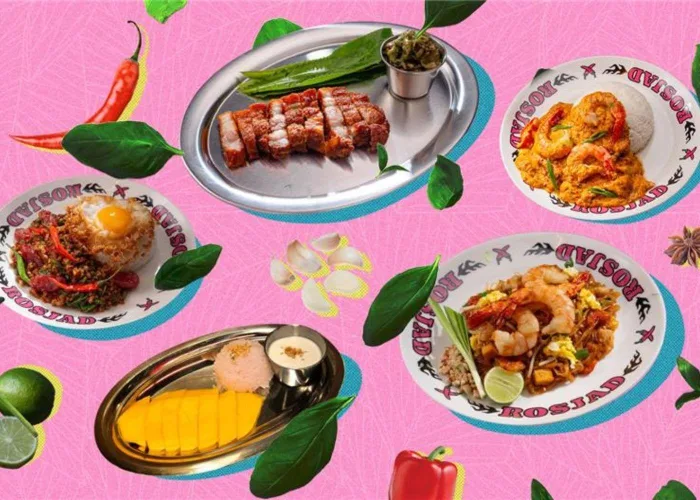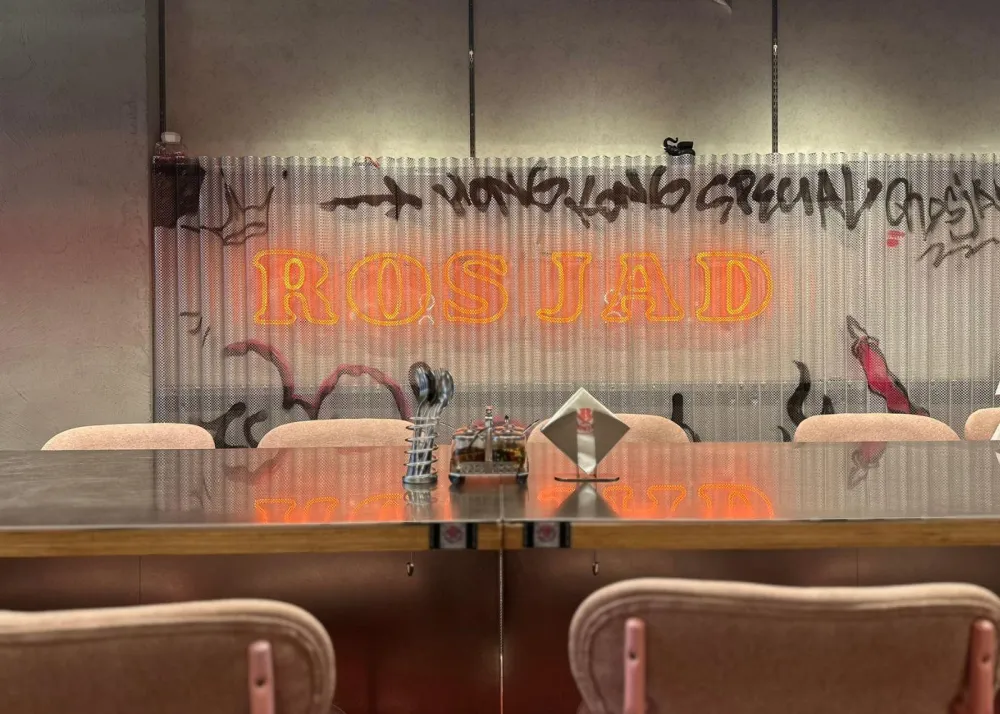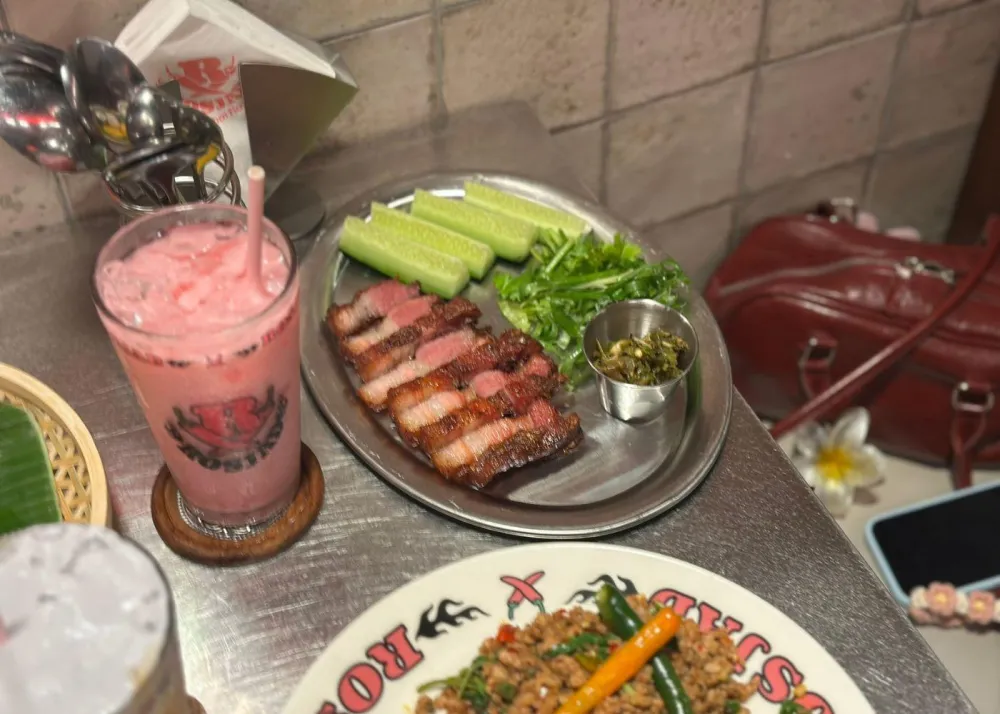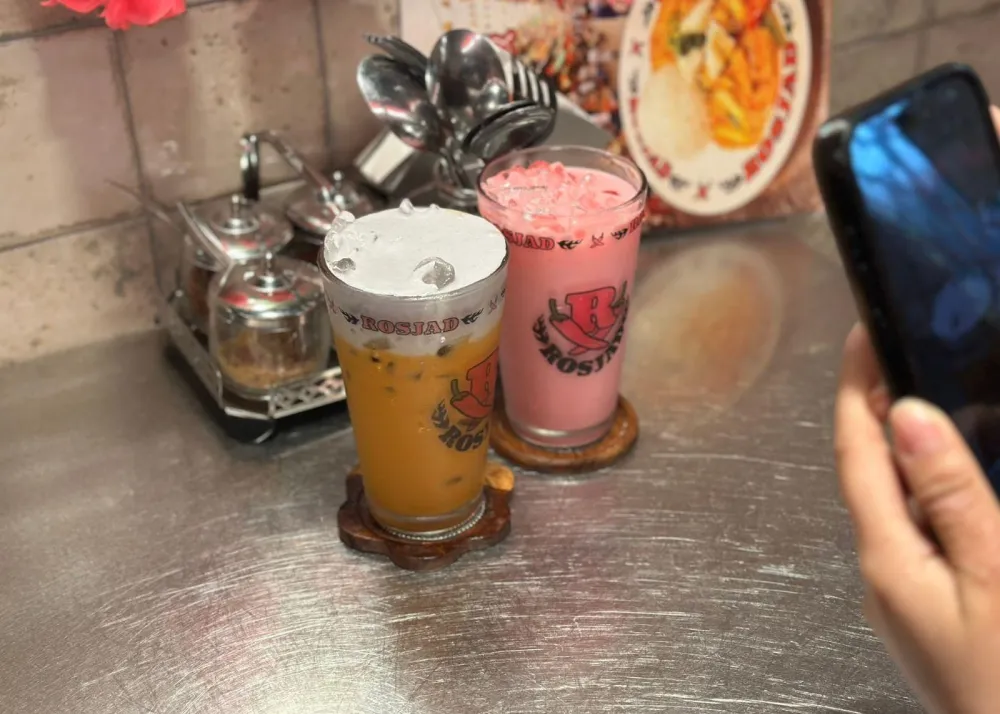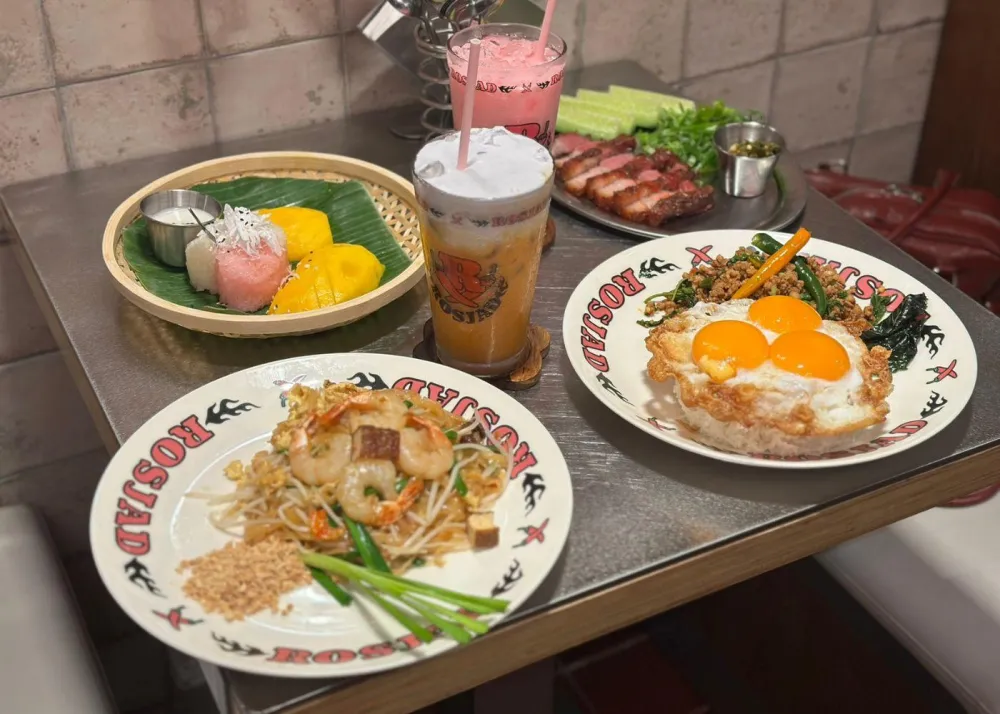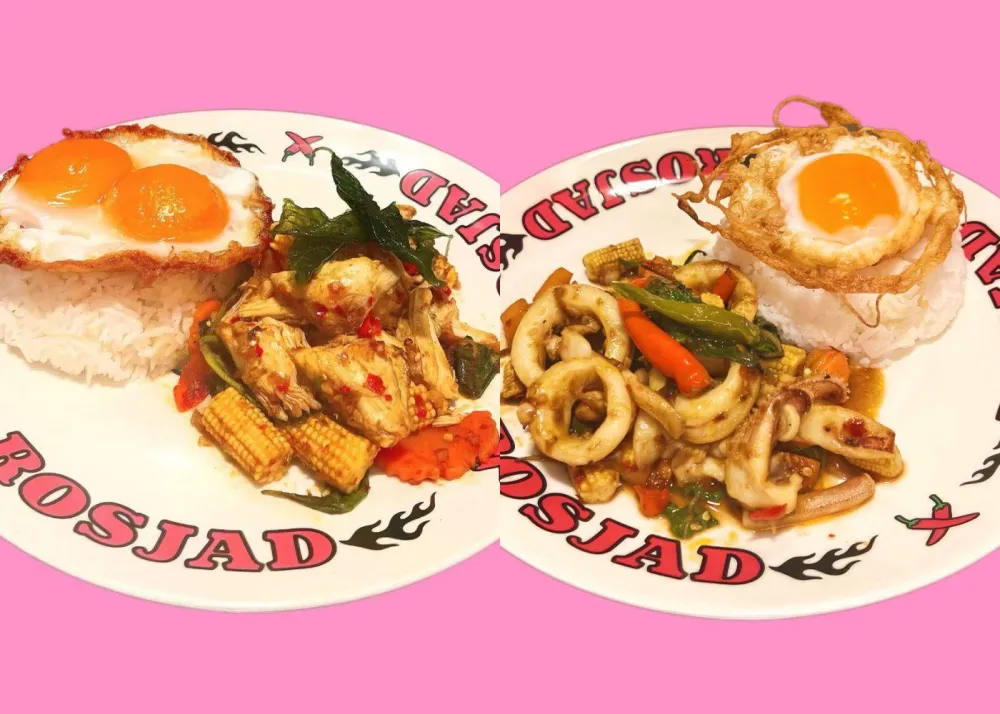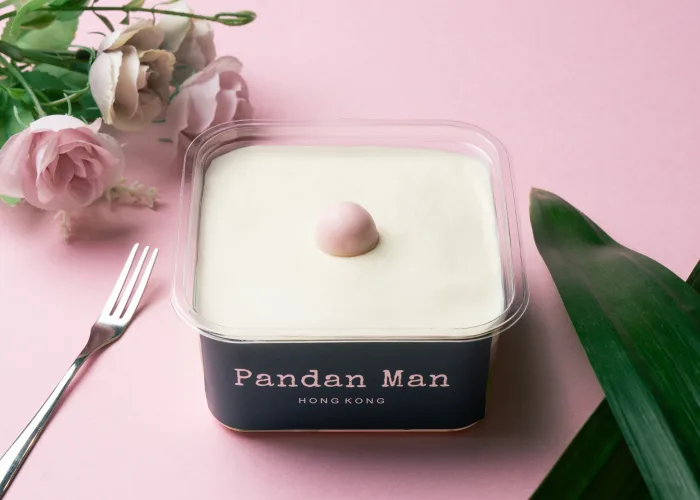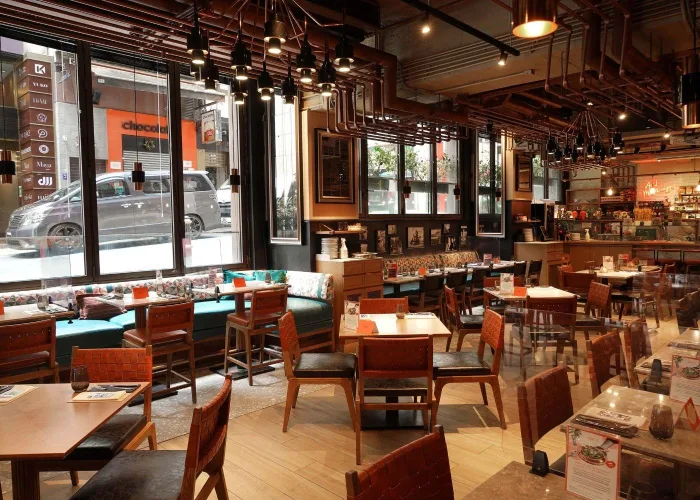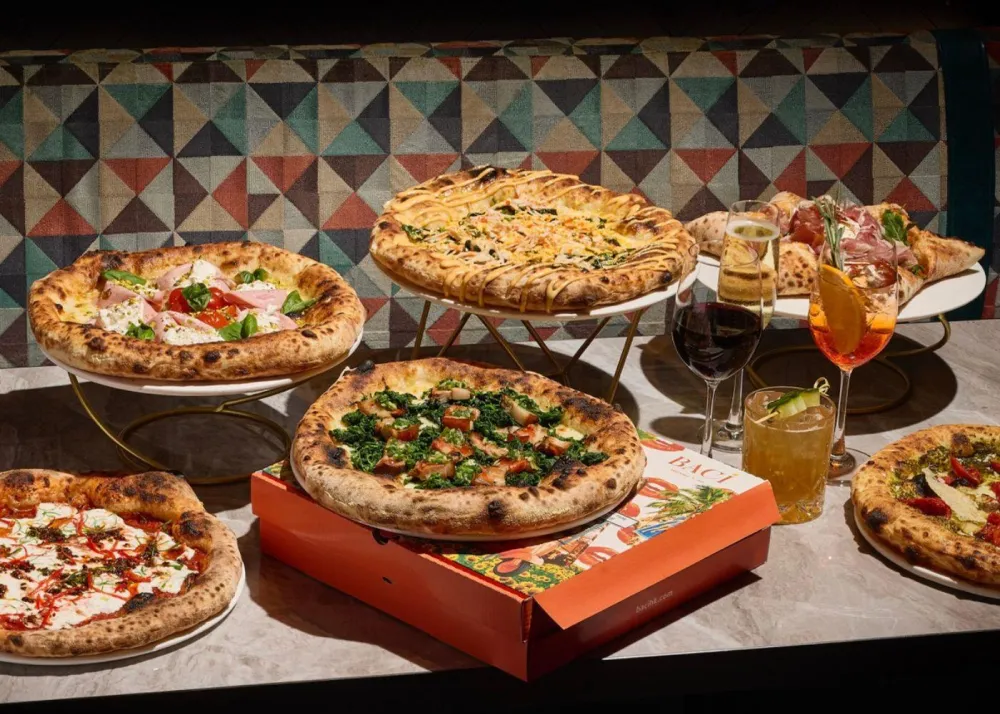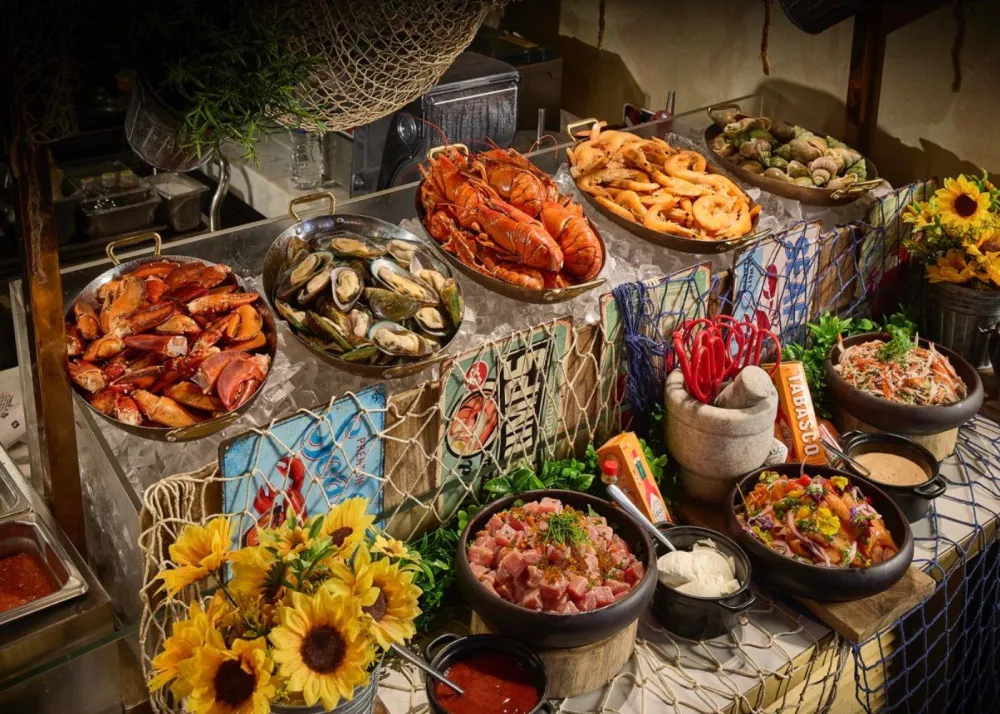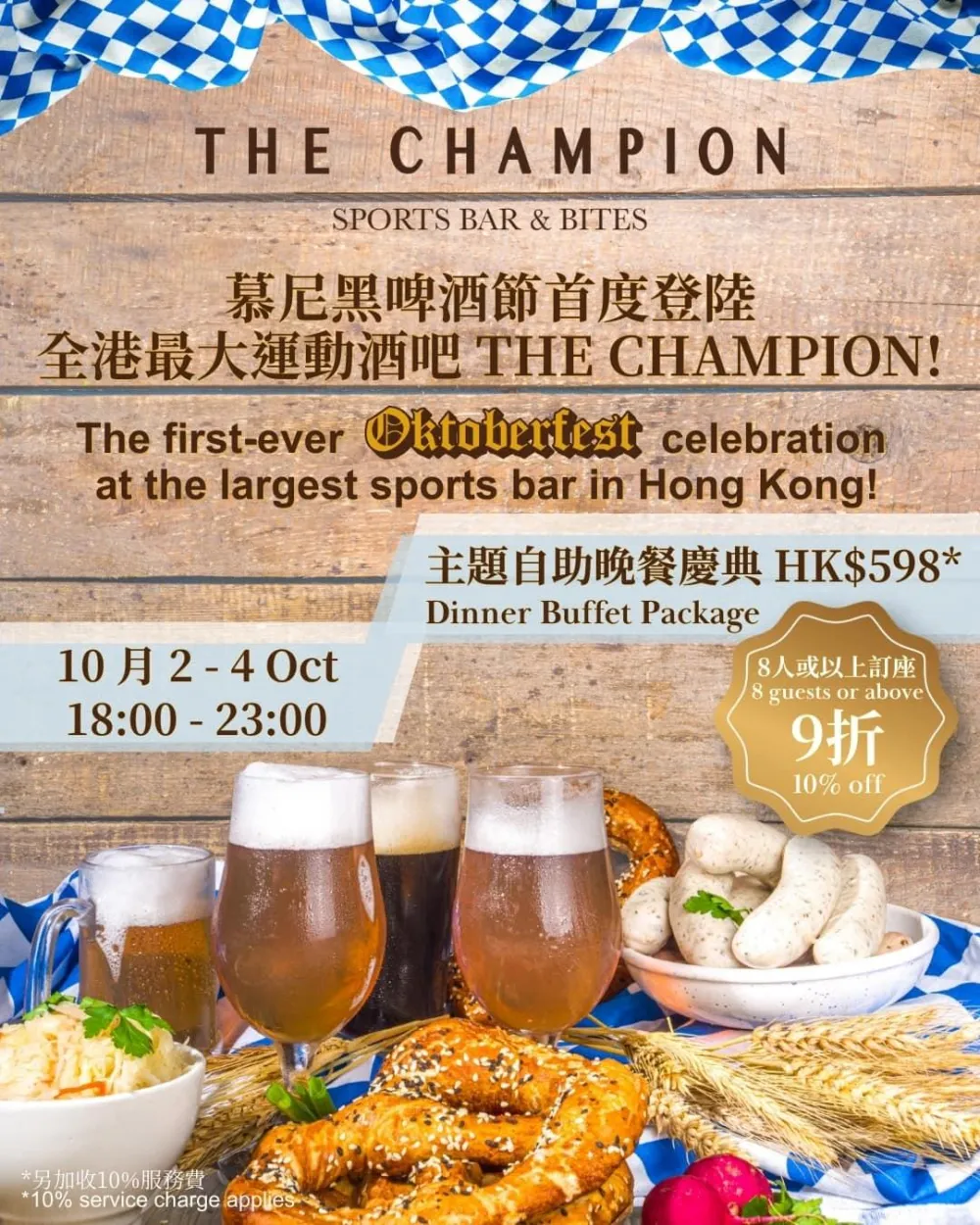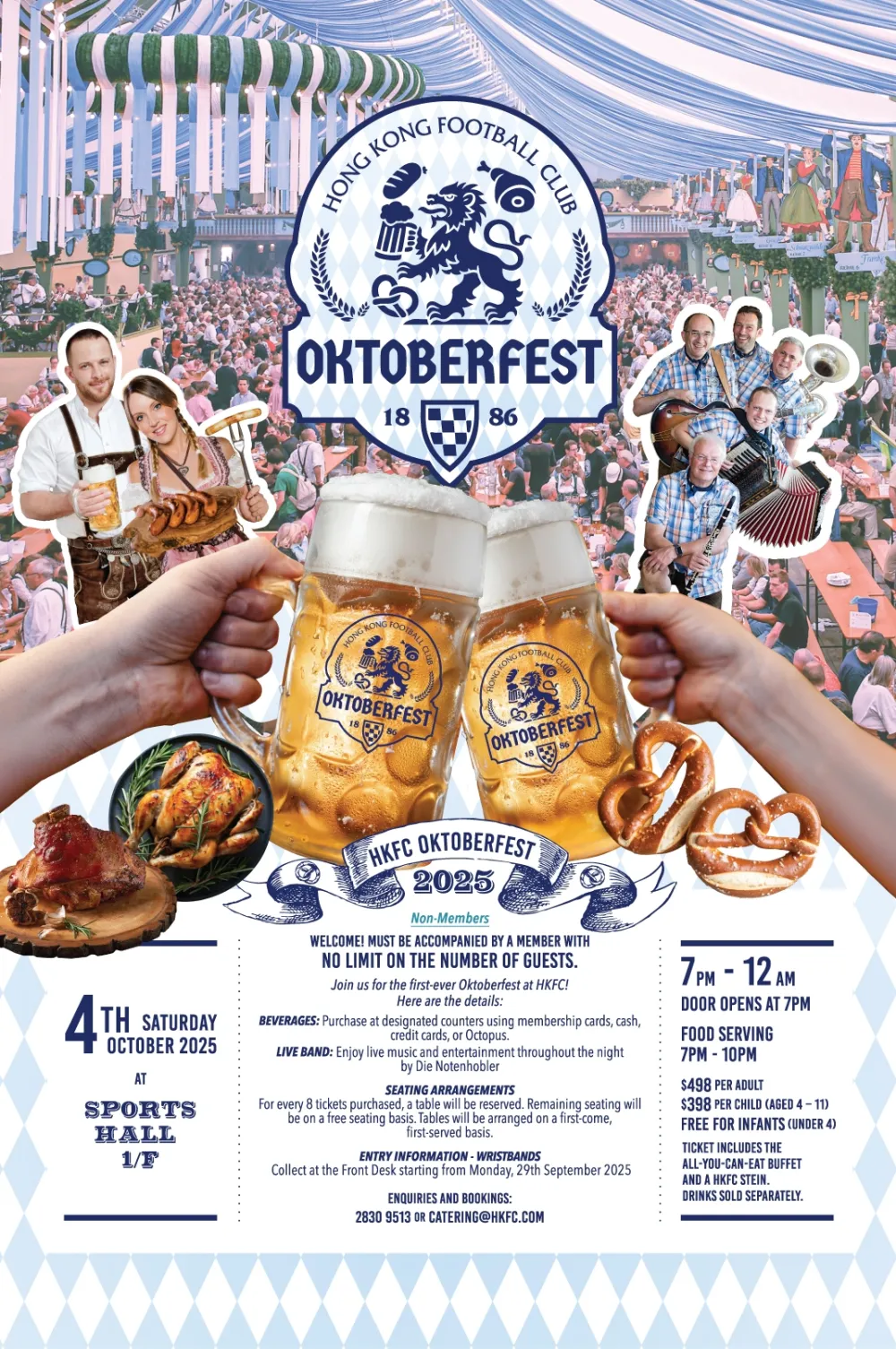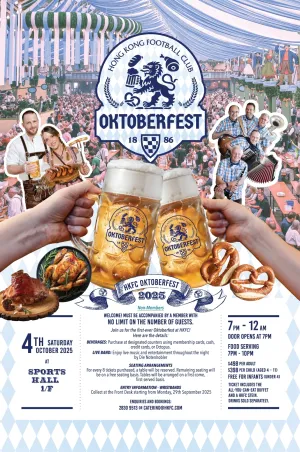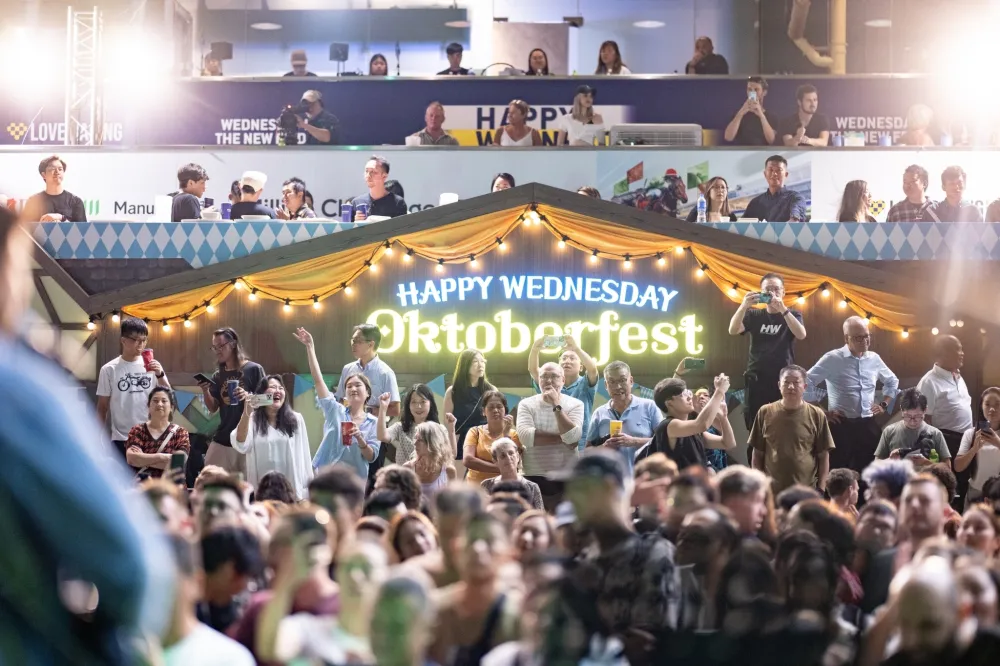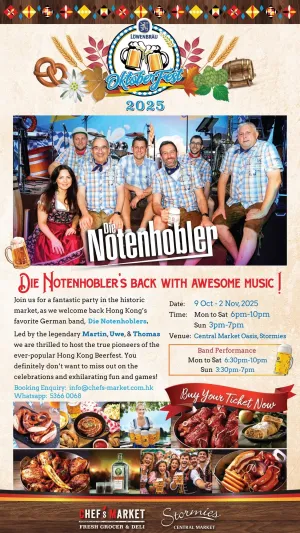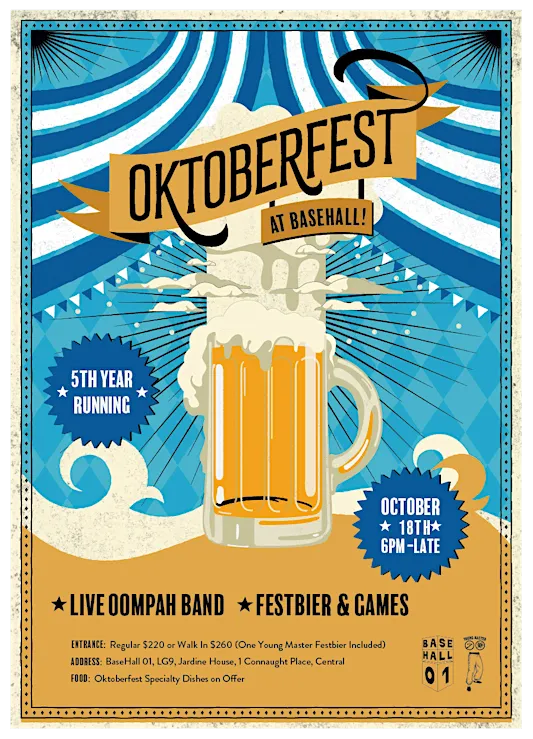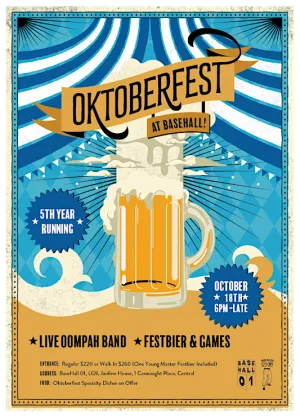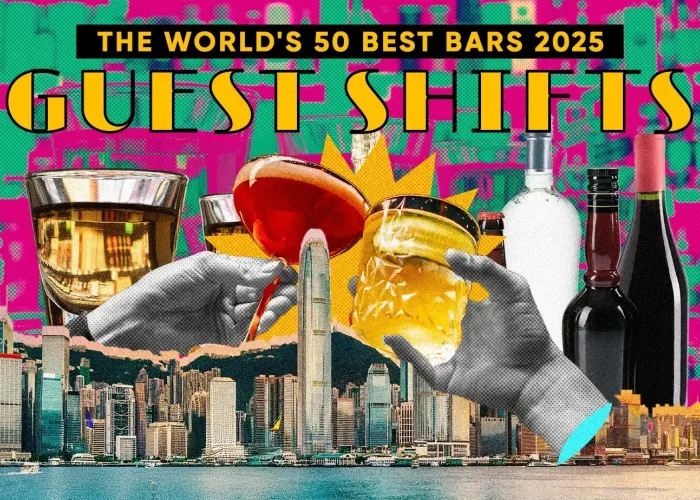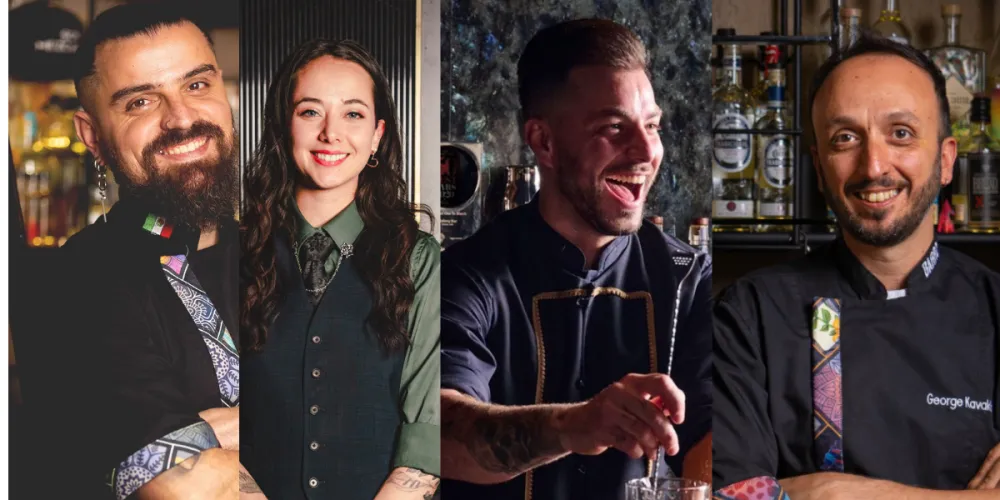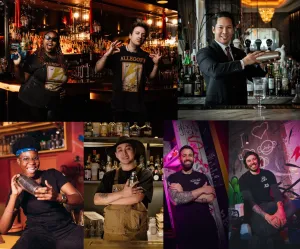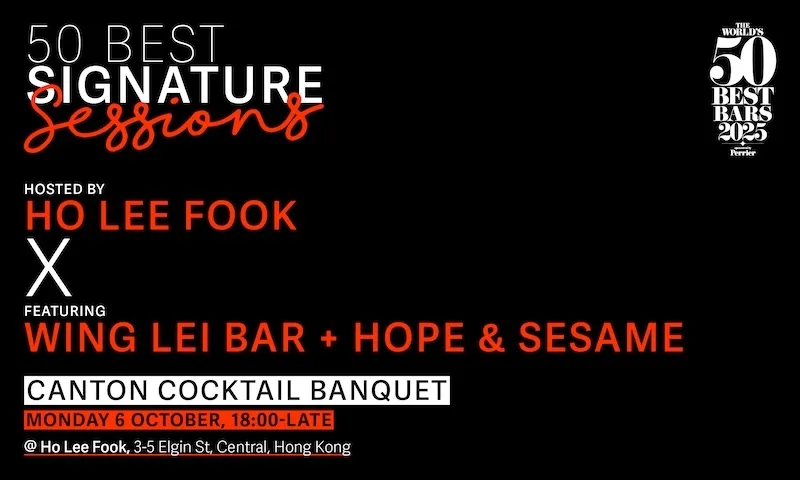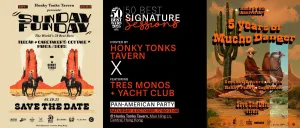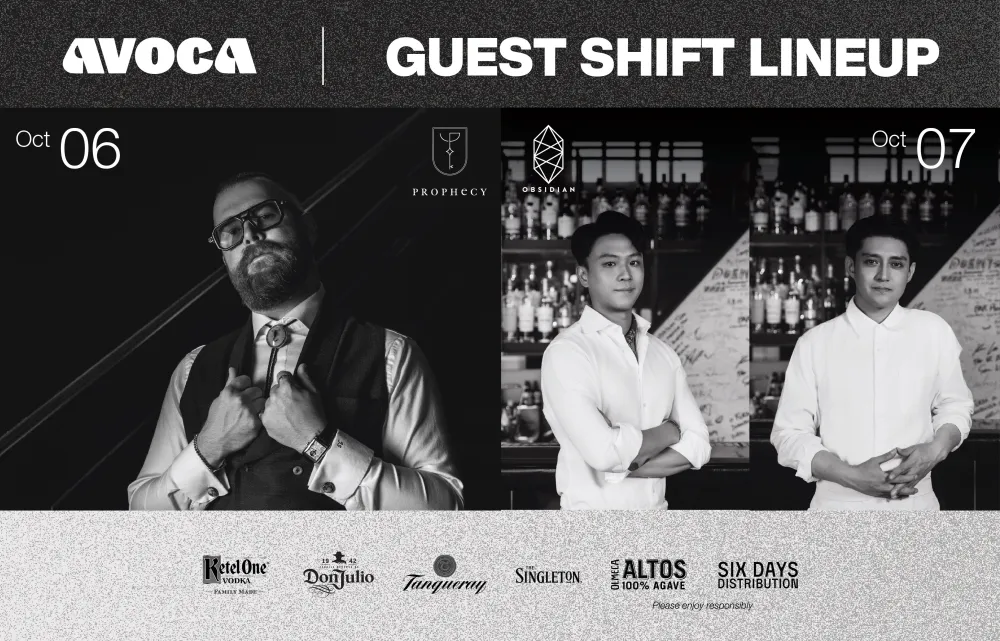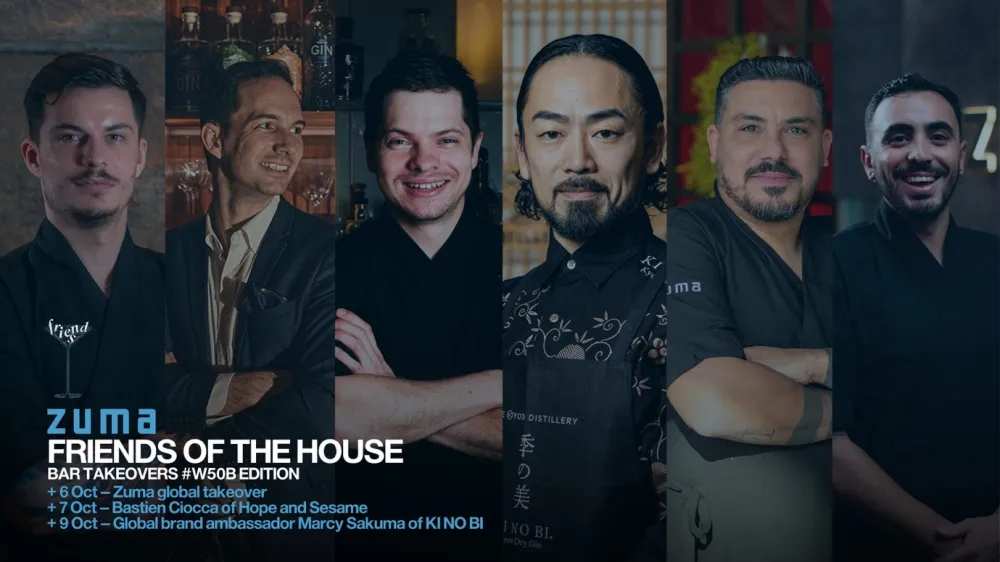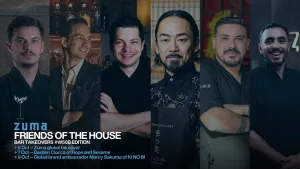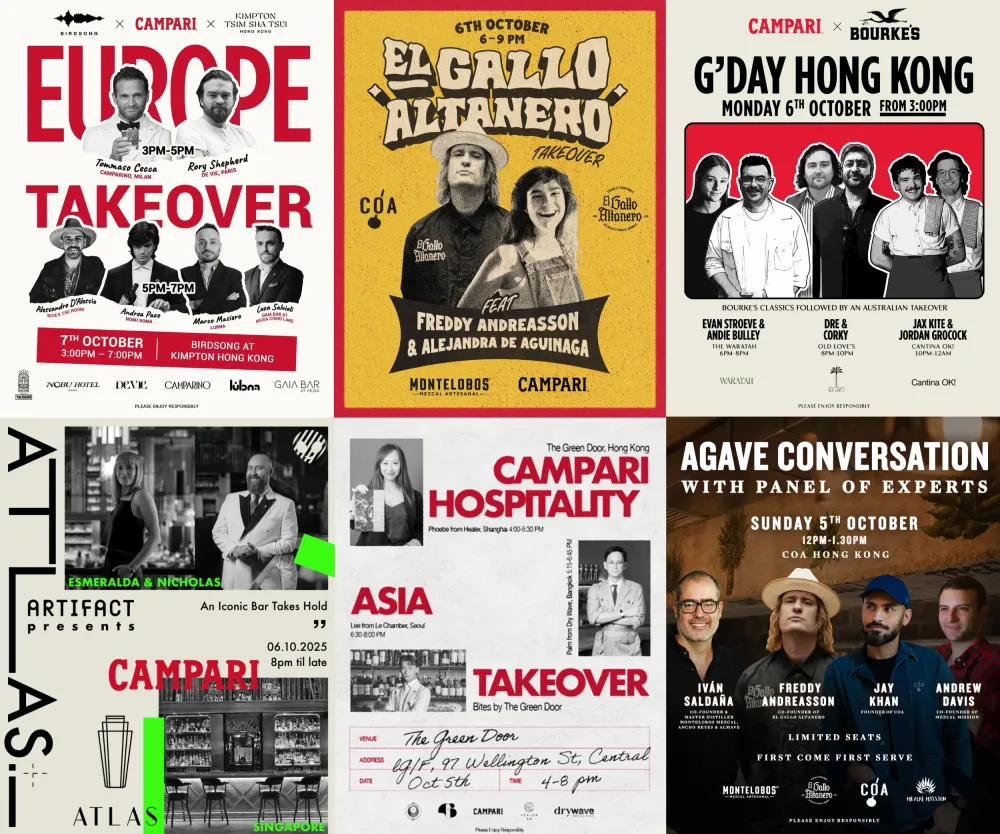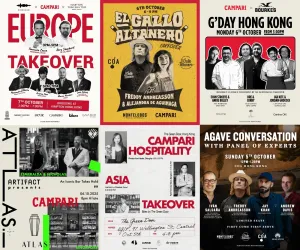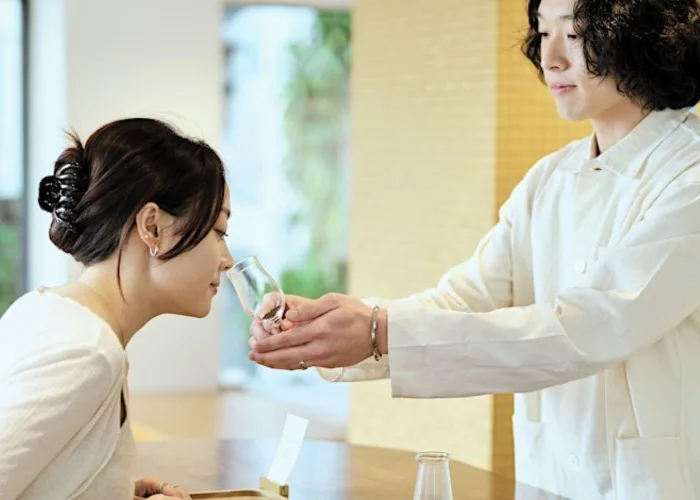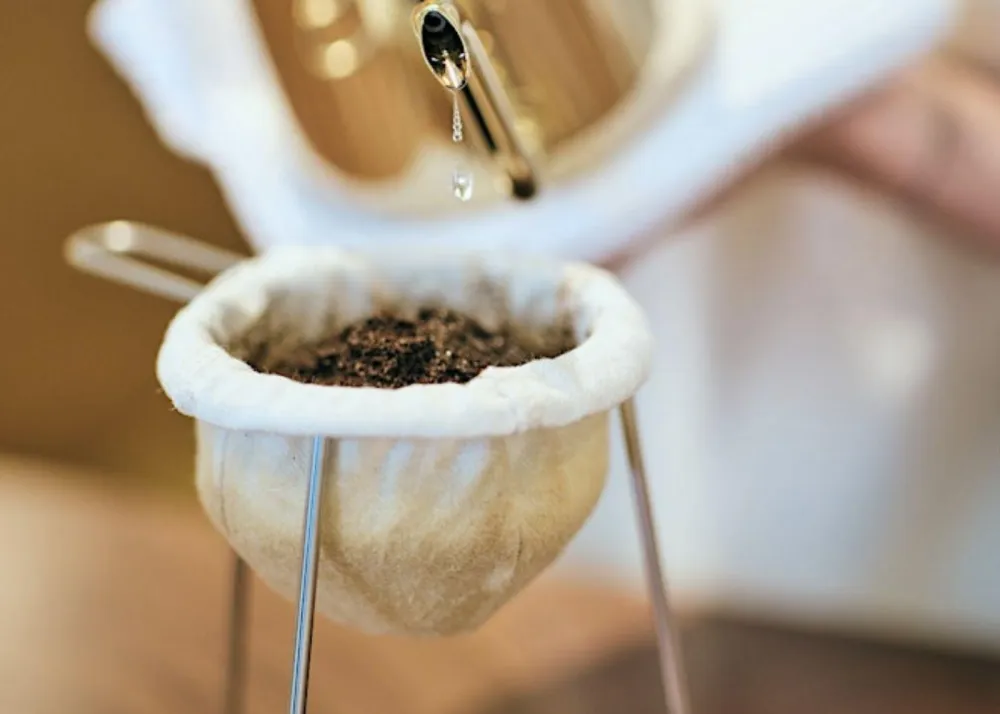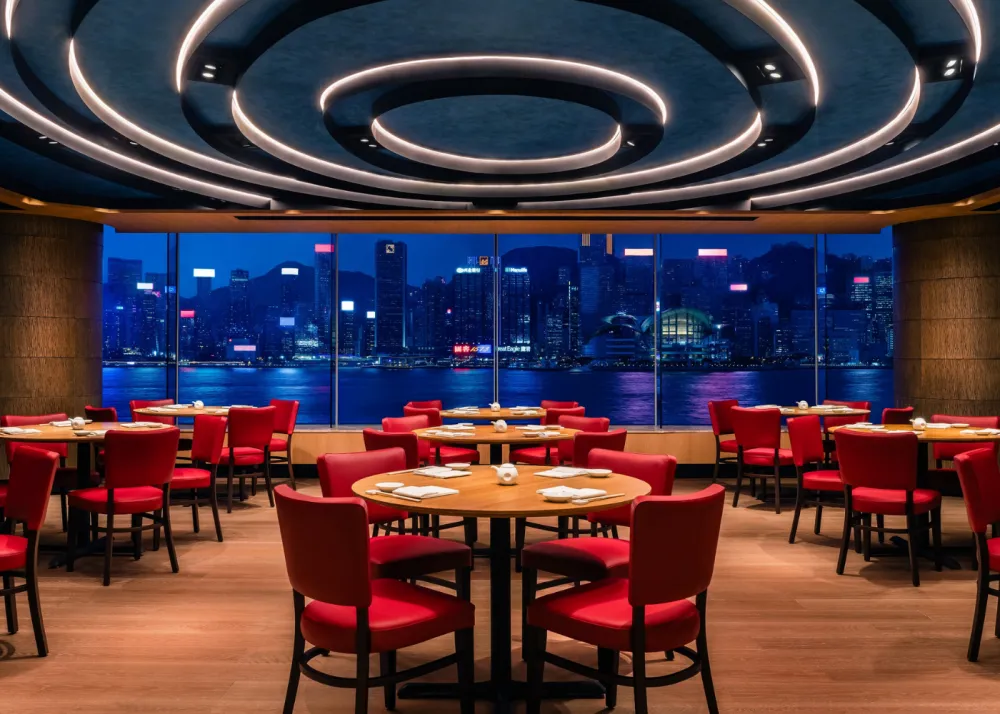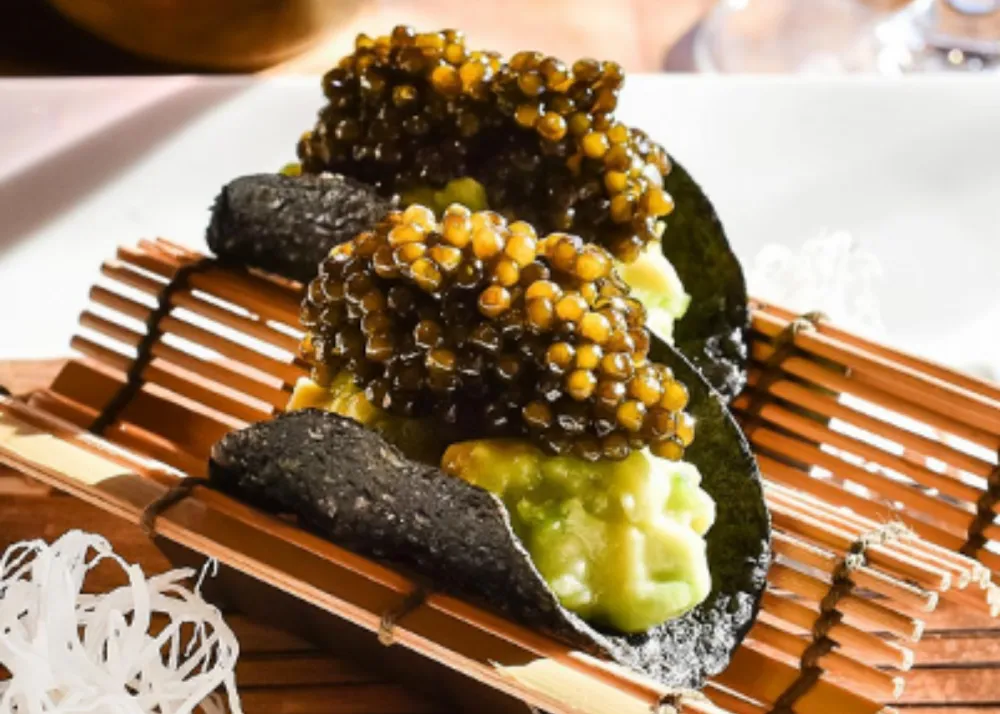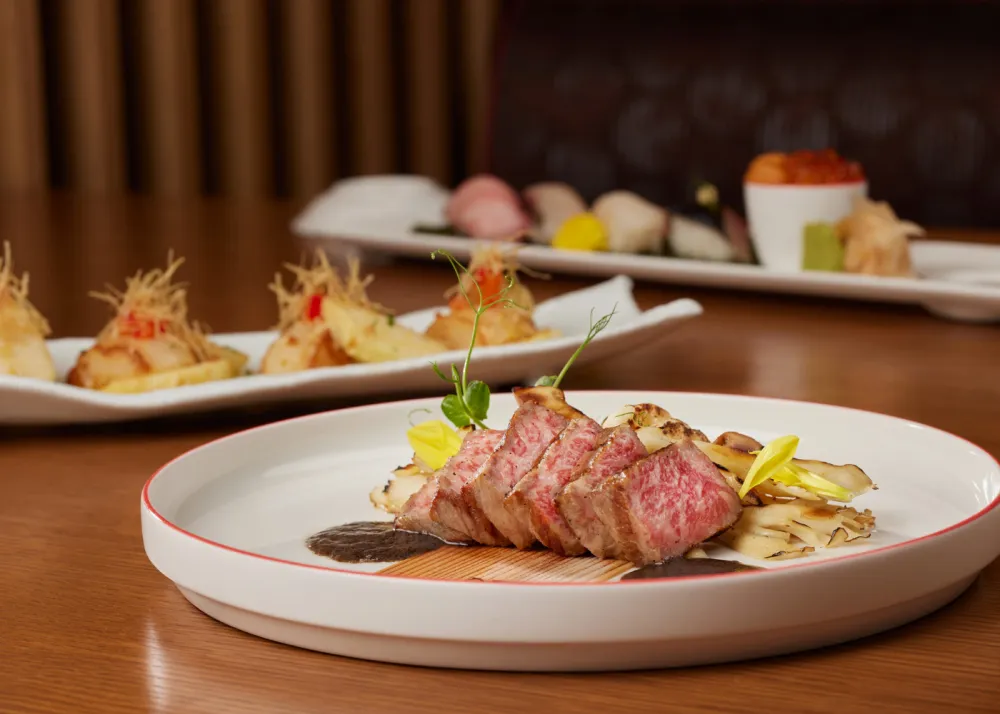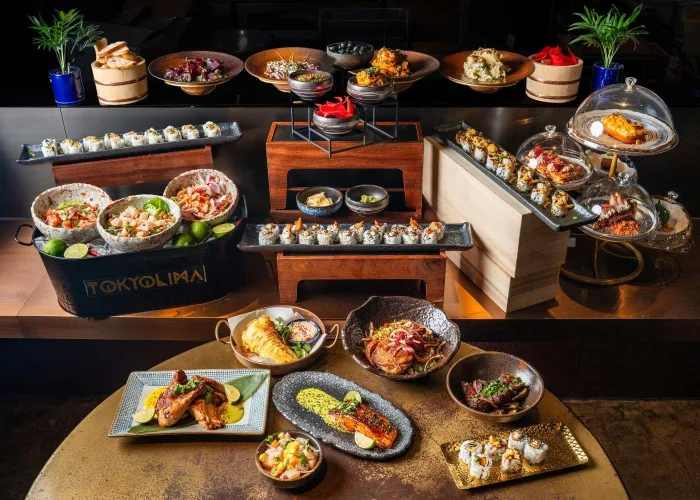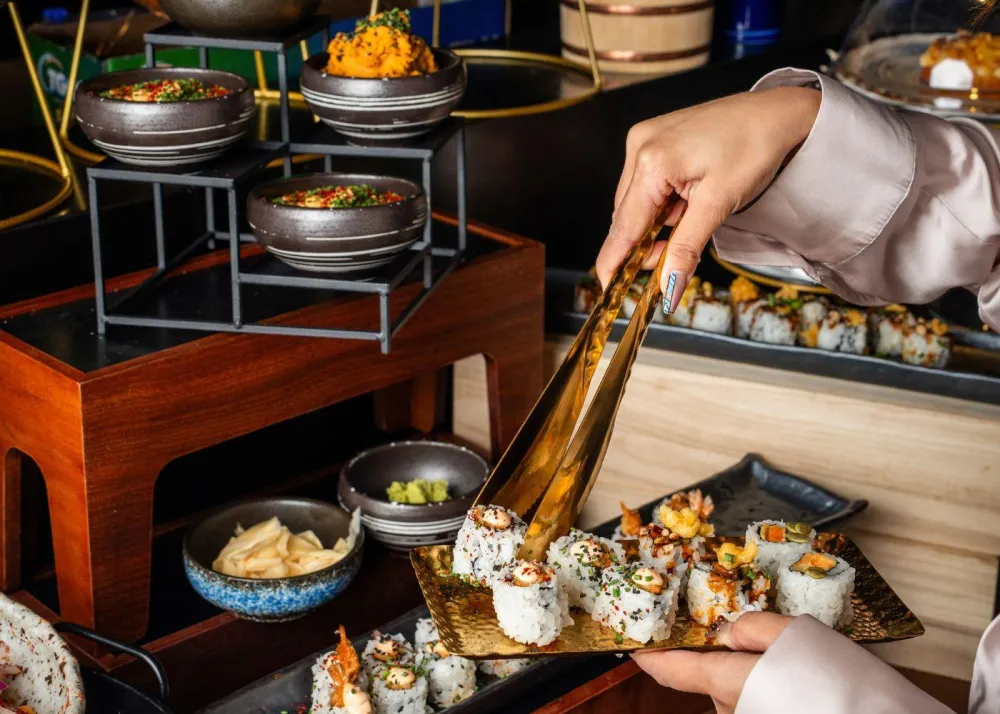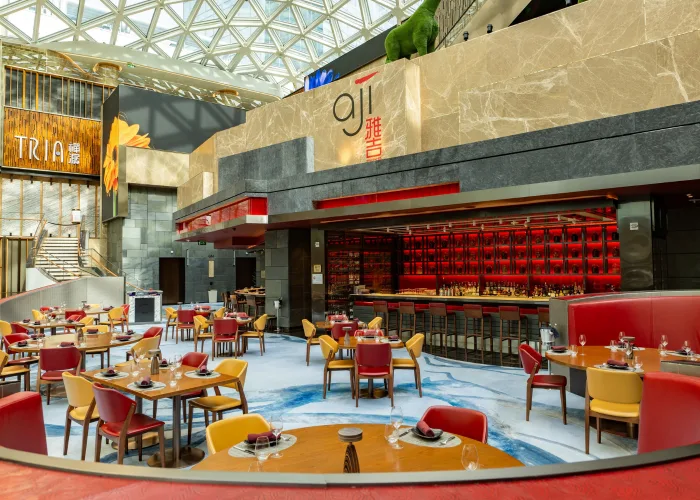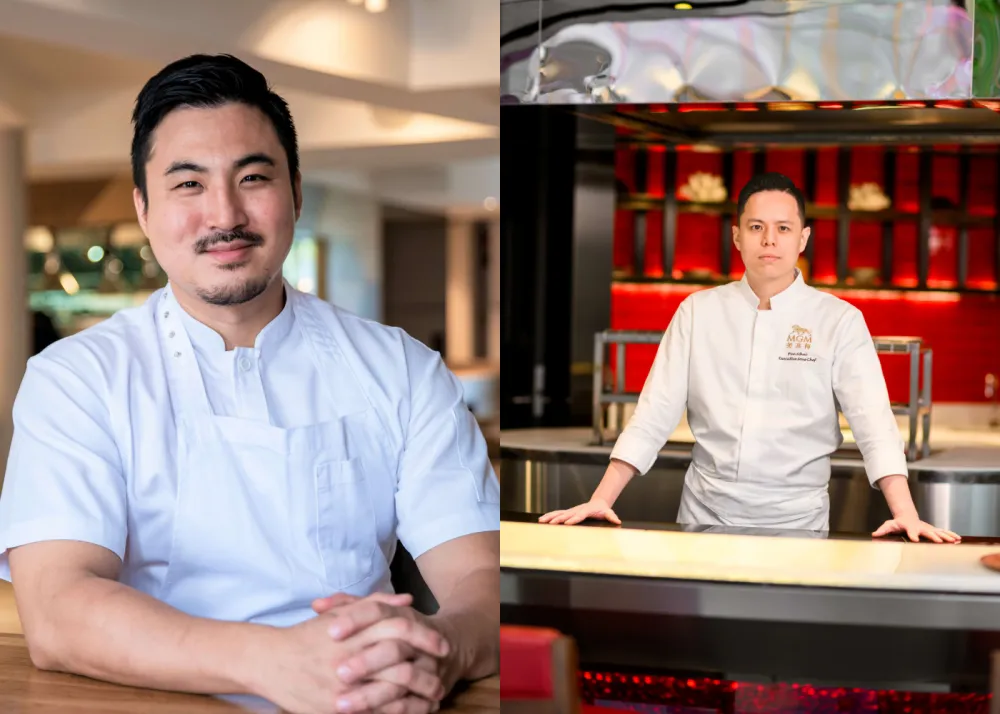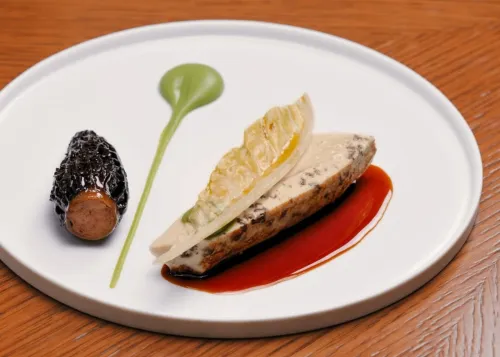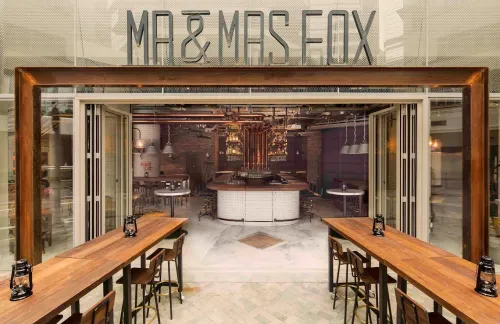The Story of the Flying Pan, Hong Kong's Most Loved Western Breakfast Chain from the Past

Synonymous with nostalgic family brunches, late-night refuels from partying, and an escape from the rush of Hong Kong to a world of pancakes and American deli vibes, the Flying Pan was Hong Kong’s most cherished breakfast chain to ever grace the shores of the city.
Selling breakfast only, for seven days a week, 24 hours a day, the Flying Pan was not only the first 24/7 Western dining spot to come to Hong Kong, it was a modern foodie landmark, a respected institution of breakfast.
At the height of business, the Flying Pan chain had locations in Central, Wan Chai, and Discovery Bay, with interest in Singapore, Ho Chi Minh City, Dubai, and London. The brand was popular both with expatriate Westerners and local Hong Kongers.
Operating for 17 years until March 2021, when the brand shuttered their doors in Wan Chai as a result of the COVID-19 pandemic, much was left a mystery about the Flying Pan, beyond the famous logo – a pan with two eggs with flapping wings.
To uncover the story behind one of Hong Kong’s preeminent breakfast chains, The Beat Asia was granted exclusive interviews with Tammy Greenspon, founder of the Flying Pan, and Jason Budovitch, the chain’s financier and business advisor, to delve deep into the concept, people, and stories of Hong Kong’s most loved breakfast chain.
Tammy’s Brave Introduction to Hong Kong’s Food Industry
Tammy Greenspon, an American born in Los Angeles, came to Hong Kong in the spring of 2001, after working in Europe and Asia for hotels as a food and beverage director.
Arriving months prior to the 9/11 terrorist attacks in the U.S., she served as a headhunter for hotels, restaurants, and airlines in the Hong Kong food and beverage industry, organizing operations and budgets for a number of clients in the city.
“It was worse than Covid,” Tammy recalled, referring to how the 2001 terrorist attacks in the U.S. saw Hong Kong’s tourism industry and international trade suffer immensely. "The Peninsula Hotel [in Tsim Sha Tsui] was operating at a 3% capacity.”
“The writing was on the wall,” Tammy said, “I thought ‘I know they are going to let me go from my job. I haven’t [even] finished my probation period.’”
When Tammy ultimately saw her dismissal from her short-lived job, she shifted gears and sought to open a restaurant in Central, a venture she was passionate about. El Taco Loco, an escalator-side Tex-Mex fusion restaurant, was born in early 2002, serving authentic tacos, burritos, margaritas, nachos, and Mexican beers on Staunton Street.
“I opened [El Taco Loco] because being from California, before [El Taco Loco was born], Mexican was completely missing in Hong Kong. There was nothing.” El Taco Loco was a hit in Soho’s food scene, selling the city’s first “authentic” Mexican grub.
Eight months after opening El Taco Loco, Tammy branched to next door, opening Archie B’s with her business partner, a New York-style deli selling classic East Coast sandwiches such as pastrami on rye, meatball sub, and Philly cheesesteak. Another cuisine that was desperately needed in Hong Kong’s food scene.
With El Taco Loco and Archie B’s open for a number of years, the arrival of the SARS epidemic to Hong Kong in the spring of 2003 hurt her operations of El Taco Loco and Archie B’s. “Landlords didn’t want to give you a rent reduction and nobody knew how long it would last and what was going on.”
“Pandemics have killed me in the business in Hong Kong,” Tammy told The Beat Asia.

Expats left the city and locals hid away from the dangers of socializing and sharing spaces with possibly infected strangers. The food and beverage industry in Hong Kong in early 2003 was hit, forcing many businesses to reconsider operations.
Her business partner at the time took a job in Shanghai to escape the infected city of Hong Kong and was bought out by Tammy’s new business partner who had different and conflicting ideas for the direction of the restaurants. Tammy had run the two restaurants for three years and wanted to move away from her business partner that she did not see eye to eye with.
During her time running El Taco Loco and Archie B’s, Tammy had two customers to her restaurants, Jason Budovitch and Paul Almond, who would regularly visit and speak with Tammy, forming a bond with her and becoming invested in her passion.
Jason has been living in Hong Kong since 1991 and worked in the private equity space for more than 20 years, investing in small and medium start-up businesses in the city. Paul was a respected employment lawyer in Hong Kong, now currently living in Sydney, Australia.
“I had [these] two customers and friends who knew [that I wanted out], that my new partner was [unsavoury]. They said to me, ‘if you ever want to open another restaurant, whatever you want to do, we’ll back you.’”
“I told my partner, ‘you buy me out, I’m leaving.’” Tammy informed her business partner that she was leaving the business in December 2004 and booked a holiday to Australia on New Year’s Eve for several weeks to clear her head and reposition her strategy for her next business.
After returning from Perth in January 2005, Tammy set her sights on building a breakfast restaurant in Central – soon to be the Flying Pan – with her former customers and new business partners, Jason and Paul.
“It was really funny because my two partners really trusted me and they didn't even know the name of the restaurant nor the concept [of the restaurant,” Tammy said.
“Jason wrote me a contract on a napkin in Archie B’s, writing ‘I pledge to support your next restaurant.’ They truly believed in me.”
He propositioned Tammy with a pledge that if she ever had an opportunity to create a new business, then Jason was her go-to business partner. “She said, ‘let’s do it and work together.’ She talked about a breakfast restaurant previously and had a name. We quickly began aggressively looking for space.” The partnership began on the condition that Paul was included in the business plan.
After opening the Flying Pan, Jason became involved in strategic business development, as well as ad-hoc tasks and discussions with Tammy about business, staffing and food issues, finances, the menu, and costs.
The Beautiful Birth of the Flying Pan Concept in Central
The Flying Pan concept grew out of a gap in the food and beverage space in Hong Kong and a need to reinvent after her previous two restaurants.
As a former food and beverage director for hotels, Tammy knew her market. “A lot of people might think it’s the fine dining restaurants that make the most money for a hotel, but it’s not;, it’s the coffee shop and breakfast cafes.
“You have a traveller, they might only eat fine dining in your hotel once or twice, but they’ll have breakfast every stop. The highest revenue for hotels is breakfast food because it has the lowest food cost.” Western breakfast was not traditionally served in venues other than expensive hotels or special items as part of the weekend and public holiday menus at Western restaurants.
Tammy’s light bulb moment came when she arrived at the idea of making breakfast: no one was serving breakfast anywhere else. With locally sourced ingredients and recipes and staff trained on simple American recipes, the idea for Flying Pan was birthed in January 2005.
“I started thinking,” Tammy recollects, tracing her memories to how the 24/7 breakfast concept came to be, “in Hong Kong, what hours should I be open for breakfast? 6 [AM ]. Well, when I would go clubbing, I would eat my breakfast at two in the morning. So, do I stay open on the weekends? And then I decided, f*ck it. I have to pay rent for 24 hours a day, why not stay open for 24 hours a day.”

“[Previously], people weren’t in the mindset of a dining culture where breakfast is good [all day]; with the locals, you have breakfast at breakfast, lunch at lunch, and dinner at dinner,” Jason said.
“Given the nature of Hong Kong – a 24-hour city where people work and party seven days a week – there was a need for [the Flying Pan].”
The business model of the Flying Pan was simple: low price point for menu items, low food cost, meaning a push on volume and extra hours to raise costs with a steady follow of customers – and stay open for 24 hours capturing every type of Hong Konger hungry for breakfast.
After three months of scouting locations in Soho and Central, “to capture the late-night business,” Tammy, Jason, and Paul found a charming store on Old Baily Street, opposite the former Central Police Station, for their Central location. The original site for the 24/7 Flying Pan breakfast brand was born in April 2005.
Ten months later, the trio opened their Wan Chai location in February 2006 on Lockhart Road. In the summer of 2007, the Flying Pan opened their third location in the Discovery Bay Plaza.
The Californian Taste, Vibes, and Look of the Flying Pan
In an interview with The Beat Asia, Tammy explained how the Flying Pan name came to be. “In America, we have a phrase, ‘I need it on the fly,’ meaning I need something quickly. In New York, when I was a kid, my grandparents used to take me this breakfast restaurant called the Magic Pan. I loved it.”
Prior to her holiday in Australia, whilst still working at Archie B’s, Tammy was sitting at a table and drew the logo that came to be the infamous Flying Pan emblem: a shallow black frying pan with two sunny side up eggs in the centre, with a set of blue , flapping wings on the flying pan handle. The name and logo were a meeting of her favourite childhood crepes breakfast joint and a quirky American saying.
Just like the logo and name, everything about the Flying Pan was flamboyant, extraordinary, and brazenly American.
"I refer to the Flying Pan look as nouveau-retro, a diner-style that relates to my youth and background in south California,” Tammy described where the famous Flying Pan look comes from. “I wanted the Flying Pan to emanate calm, blue California feelings.”
Both the Central and Wan Chai locations were identical in look and style. Black and white photographs of nature and city scenes adorned the light cloud and dark ocean blue walls. Soft orange lighting shone on matching wooden chairs and airy couches that sat above the famous brown and white checkerboard floors and underneath the light blue squared tables.
The menu and taste of the Flying Pan chain took inspiration from Tammy’s youth and memories of west coast American breakfast dining.
“[The Flying Pan menu] was a mash-up of some of my favourite southern California breakfast places. We borrowed the 24 hoursness and bottomless coffee service of Denny’s, the pancake dishes and blueberry syrup of IHOP, the omelette and egg dishes of Mimi’s Café, and shared breakfast platters from Beliles,” Tammy described.
The original menu, which contained over 140 items on it, took three months to design and create. After several years of fine-tuning, the complete version of the menu had over 200 items, with more than 2,000 permutations of different ingredients able to form new recipes.

The menu, itself, was extensive and creative.
It contained 21 choices of two eggs plus an added protein, European and American seven-side breakfast combos, 30 different omelette, ranchero egg, and frittata options, a selection of pancake, oatmeal cake, Belgian waffle, challah French toast, and blintz dishes for sweet tooths, 24 options for proteins, seven ways to make eggs, and upwards of 70 alcoholic, juice, soda, smoothie, milkshake, and cocktail beverages.
The first menu was a single A3 sheet of paper in black and white, with no guiding pictures. “[The original menu] evolved to the picture menu we had because I realized people need visual guides, myself included,” Tammy said.
The final menu became an instant icon when Tammy added the Flying Pan logo to the front page, alongside a picture of the famous “The Flying Pan” full-English style breakfast set.
Each ingredient was required to be used multiple times in recipes for items throughout the menu. “We came up with a really big menu with really not a lot of ingredients,” Tammy said, in an effort to save money in purchasing costs.
In the 17 years of operating the Central and Wan Chai locations, menu prices were raised only five times. “We resisted; we never increased [the prices] more than 3 to 5 per cent [at a time].”
Jason told The Beat Asia that he had never been to a diner nor breakfast-style restaurant in San Francisco, Toronto, New York, Europe, or Asia that had a menu like the Flying Pan. “I would think, wow, there’s nobody really doing anything like us.”
Initial Nerves and Deserved Success of HK's First 24/7 Western Restaurant
In the beginning, Tammy worked 80-hour shifts prior to opening and during the first year of business in Central, creating the name, concept, look, taste, and running business operations of the Flying Pan, alongside financial and logistical assistance from Jason and Paul.
The Flying Pan operated differently as a business and a brand, one of the city’s first 24/7 Western restaurant venues and breakfast joints. Preparation and cooking were calculated and organised. “If we’re not cooking for people,” Tammy thought prior to opening, “we can do preparation.”
“Most of our food preparation would be done during dinner service from 9 PM to 1:30 AM. We would get busy from 1:30 AM to 3 AM, slow again with fewer customers coming during the graveyard shift, do clean up, and get busy again at 6 AM.”
“Before COVID, we would [be] busy from the graveyard shift on a Thursday morning and it wouldn’t stop until Sunday afternoon,” Tammy said.
“Sunday mornings would be weird. We would have drunk people still buzzed from clubbing eating their breakfast, families with kids who don’t sleep in, and churchgoers before they go to Sunday service – all under one roof.”
Thursdays, Fridays, and Saturdays were important to maintain a constant cash flow into the business, with late-night revellers and early-morning risers packing into Old Bailey and Wan Chai for a meal. “Doing breakfast, you have to capture volume, you have to be open 24 hours and capture that late- night business,” Jason said.
However, days prior to the opening of the Central location, spirits were low for Tammy, who was pessimistic of opening Hong Kong’s first 24/7 Western restaurant at the result of criticism from her friends who dismissed the business could work. “A few people had said to me, ‘oh, I think this is like the dumbest idea I've ever heard,’” Tammy said.
“The Flying Pan had just gone through its soft opening [in April 2005] after we tested all the recipes and prepared the staff in the operations and for customers. We opened at 8 PM on the first day and I told my staff to call me if they had any questions. Nobody fully knew how to make everything and we didn’t have any customers.”

At 6 AM the following day, the Flying Pan had only four people come in and eat – Tammy's friends. Living on Staunton Street, above Old Bailey Street, Tammy instructed her staff to call her if they get busy.
“I remember sitting there thinking, ‘oh my God, what have I done? I have opened a restaurant that only serves breakfast and we’re f*cking open 24 hours.’”
Nervous, Tammy ventured down to the Old Bailey at 8 AM and found a line circling down the street of people waiting to get in. “I said to my stuff, ‘oh my God, why didn’t you come and get me’? ‘Everything was under control and we’re doing fine,’ they said.”
“We had a line down the block every weekend after opening. We paid off our renovation of the location and operating costs in six months.” The Flying Pan became the ‘it’ place for breakfast any day and time of the week.
On the contrary, Jason was brashly optimistic about opening the Flying Pan. “I didn’t think that it was a f*ckup, I thought it was a great idea. 24 hours was going to be fantastic and a no-brainer. People around me were less optimistic, telling me it was risky and I was crazy.”
“When I moved to Hong Kong in 1991, I was young and partied with my friends on the weekends in Soho. It would come to a point of the evening we would want to eat some food. There was nothing, apart from the bad kebab.”
Jason recalled people in the food and beverage, banking, and late-night industries mentioning that they were ecstatic at the opening of a 24-hour Western diner in a city with highly limited options for breakfast lovers.
“There was a market for [the Flying Pan] here and we had no competition. No one is doing anything like this. The location was really suited for it and the market supported the concept. Lo and behold, from the moment we opened [Old Bailey] there were lines [of waiting customers] down the block every weekend.”
Breakfast for Red-light Wan Chai’s Hungry Workers and Partygoers
After six months in business following the opening of the Old Bailey location, Tammy and her financiers and breakfast-advisors Jason and Paul began efforts to open another location in Wan Chai, out of sheer necessity to alleviate stress and customer numbers from Central.
“Old Bailey was constantly packed and people would wait outside on weekends for 30 minutes for tables. We had so much business from the nightlife in Soho and LKF, even people partying in Wan Chai would come to Old Bailey to end the night,” Jason said.
Thus, it became evident that a need to open in Wan Chai, capturing the 24-hour rush of late-night expatriate customers and lunch-time business from local office workers.
In late 2005, Tammy, Jason, and Paul began scouting a location along Wan Chai’s Lockhart Road, the strip of the red-light district, and opportunity waiting to open in the neighbourhood. They settled on their first Wan Chai location, a third floor corner restaurant on Lockhart Road and Luard Road, replacing an old martini bar.
The takeover in Wan Chai was straightforward as the former tenant had a kitchen and interior pre-built. The dining room employed the same finishing details, checkboard floor, and overall interior design of Old Bailey.
The site was too large to outfit tables and the kitchen would never have been able to keep up if customers sat at tables, Tammy explained. “Let’s create a different ambiance to slow the kitchen down. Sofas would be really popular so we put installed sofas in Wan Chai. So many people loved to sit on the sofas, lounge about and eat.”
“The vibe was more New York in Old Bailey with crowded tables placed close together. Wan Chai had a California vibe with blue sofas lining the walls and [was] much brighter.”

Jason commented that “Old Bailey was straight-up dining, in and out. Wan Chai, you could put your feet up and read the paper on the sofas, have coffee and a plate at the breakfast just like you would at home.”
The Wan Chai location was key for attracting the hotel sector and office trade in the area. By 12:30 PM on a weekday, the lunch-service catered to almost 80% of white-collar local Hong Kong Chinese, who grew a fascination and liking for the brand and breakfast food.
“We were surprised by the strong lunch business from the local [Hong Kong Chinese], we began to grow an awareness with this customer-base introducing this kind of breakfast,” Jason said.
The Chinese cultural aspect of sharing dishes amongst a group of people transferred effortlessly to the Flying Pan, with a large segment of the local population entering the diner for the first time and becoming familiar with the concept of breakfast food after breakfast time. “We were still big with the [expats] who were very certainly accustomed to breakfast any hour of the day, but we need to capture everybody.”
Jason estimated that the balance of expats to local Chinese was a 50/50 split, with an average of more local Hong Kongers visiting the Flying Pan than Westerners.
After six years in the first Wan Chai location, their landlord forced their exit out of their third-floor restaurant and the trio into searching for another opening in Wan Chai. After a months-long search, they found a first-floor restaurant on the corner of Lockhart Road and Fenwick Street, visible to the road and above the former Typhoons bar.
In the spring of 2014, they opened to businessmen, families, and partygoers flocking to their laidback store.
The Plans for a Potential Asian Expansion and Domination
Tammy, Jason, and Paul had their sights on bringing the Flying Pan brand regional and even global, with interest and talks held in Singapore and Vietnam for locations opened in the respective countries.
“The brand and menu stand on its own two feet in many markets,” Jason told The Beat Asia, discussing the potential for an Asian expansion.
The pair ventured out to Singapore and Vietnam in 2010 and 2011 respectively to scout locations and meet potential operating partners to open across the Indian Ocean. “The only way we could go into both markets was if we found an operating partner that had their blood, sweat, and tears in the business, an owner that was on the floor and not absent.
“Vietnam, specifically Ho Chi Minh City, would be amazing for the Flying Pan,” Jason said, still hopeful in introducing the brand to the city, “it has a young, youthful population, an embrace and exposure to Western culture, and a late-night bar culture on steroids.”
Tammy and Jason flew to Singapore in search of an operating partner and Vietnam to look at real estate. “Putting the numbers together in Ho Chi Minh City, costing out all the vendors for the different products, we calculated that we could get into business from a fraction of the cost as compared to Hong Kong.”
“Ho Chi Minh City has spectacular and gorgeous real estate, big, beautiful spaces that we could have done something amazing with. The cost of labour and staffing very low compared to Hong Kong. With a selling price [of menu items that] was very close to Hong Kong, profitability was looking much greater than Hong Kong.”

In the end, Tammy and Jason could not find “another Tammy” that would be able to respectively run the Singapore and Vietnam operations. Running Hong Kong operations alongside two other Asian countries would’ve drawn away from the efforts the two made in starting the brand in the beginning.
The Flying Pan saw a local pull too elsewhere beyond Hong Kong Island. Two years after opening on Old Bailey Street, the trio were contacted by developers from Discovery Bay in 2007 with interest in bringing the Flying Pan concept and business to the expat resort town. Renovations and development of the Discovery Bay Plaza were going ahead and developers wanted fresh Western restaurants to open chain venues.
With hesitation instinct about whether the 24/7 nature of the Flying Pan could be replicated in sleepy Discovery Bay (DB), the trio opened a small location in the plaza in the summer of 2007. “If we kept operating costs and rent down, then maybe we could survive. Nobody else was doing what we did in DB,” Jason said.
“It could become a cool little hub for the DB people, develop some regularity of a customer base that would frequent the store.” However, operating for two years making “little money” and not seeing a space for expansion of customers, the company shut their Discovery Bay operations in early 2009.
What followed six years later was a search for a venue in Tsim Sha Tsui to possibly move into the space of Kowloon for the Flying Pan brand. “We could never find a location at a rent that [we] could make the numbers work.”
Tammy and Jason received serious enquiries about opening locations elsewhere in the continent and beyond in the West.
Pitches came in from Tokyo – the trio was not able to locate the funds for the start-up, Boston, with the encouragement from state-side friends, London, and even Dubai. Tammy and Jason had keen investors and even operating partners that saw the potential for the Flying Pan in Dubai but decided against the idea as operating without a committed partner would be logistically challenging.
The Perfect Recipe for Disaster With the 2019 Protests and COVID-19
The beginning of the mammoth protest movement in March 2019 sparked the end for the survival of the Central location of the Flying Pan. “People began to take their weekends off to protest and were not going out to eat anymore.” In every corner of Hong Kong, life beyond the front lines slowed down and businesses shuttered.
The protests saw a draw away from Old Bailey and towards Wan Chai, with the protest routes flowing past the Wan Chai location on Lockhart Road. Lunchtimes on weekends were especially busy with protestors filling the dining room on a break, before returning to the scene of action.
The Old Bailey location in Central was smaller than the Wan Chai location but was constantly busy and made more money, benefitting from the buzzing night-time scene in Central. When renovations in Lan Kwai Fung began to transform the area into a higher-class drinking district, bars and venues escaped Wyndham Street and Soho to set up operations closer to LKF.
Prior to the COVID-19 pandemic, Tammy, Jason, and Paul already began looking to move the Old Bailey location to another site on Hong Kong Island as a result of a dying area for nightlife.
When the COVID-19 pandemic hit Hong Kong in January 2020, the writing was on the wall for the end of Flying Pan. "We have not recovered from the protests. We do not know how long this pandemic is going to go on for, and our landlord wants to increase our rent. We had no choice but to cut our loss and shut. We’ll just shut [Old Bailey] and concentrate on Wan Chai.”
March 2020 saw the closure of the Flying Pan in Central, a continuous run of 16 years since Tammy’s opening in April 2005.
In a post on the Flying Pan Facebook page, Tammy wrote “these past few months have been tremendously challenging for Hong Kong’s hospitality trade […] We are no exception.”
“It's with a heavy heart we must announce the closure of our Central location, effective Sunday, March 15th 2020. […] We know many of your have some fond memories of The Flying Pan and we know we will be missed.
“Hong Kong, words are not enough to express to you how grateful we are for the 16 years you let us serve you. It has been a pleasure. Thank you.”
Efforts were now focused on the survival of the Wan Chai location. Braving industry-wide shutdowns and four city-wide waves of rising and falling COVID-19 cases, Tammy and Jason were willing to continue operations at break even. “Wan Chai was going okay for months never making a profit and sometimes losing profit.”
The Flying Pan in Wan Chai was choked off from the market of late-night breakfast dining after opening time restrictions were introduced by the government and delivery became the cheaper norm. “Delivering breakfast doesn’t work when your product [is] in a box. Breakfast needs to be on a plate and fresh, not eggs that are cold and toast that is soggy,” Jason said.

At the turn of the new year in 2021, during Hong Kong’s fourth wave of COVID-19 infections, the trio attempted to seek assistance from their “unreasonable” landlord about a rent-freeze or reduction to save the business. Unable to offer them a discounted rental agreement or save them from paying rent for a month or two, Tammy had no choice but to shutter the Wan Chai operations.
“We were gutted when the landlord of our Wan Chai location would not negotiate with us. Old Bailey was a difficult situation, [the landlord] didn’t want to negotiate on rent [either]. After 17 years of being their tenant and never missing a beat [or rent payment], they were not there for us,” Jason said.
The Flying Pan was ultimately plagued by the “Hong Kong landlord mentality and mindset” of rent having to be paid on time, no matter the circumstances. When the future for the Flying Pan was uncertain, the 2019 protests, the first cases of COVID-19 in the city, and a local shutdown of restaurants all hastened the slow death of Hong Kong’s most beloved breakfast brand.
A year after the Old Bailey closure, a post on the Flying Pan’s Facebook page read, “Thanks for all the love and support through the years and especially the past few days. So many have turned up for one last plate of pancakes that we have run out of food. We will not be open tomorrow. Until we meet again, peace and pancakes.”
On April 30, 2021, the last pancake, juice, egg, and bread were served out of a Flying Pan store, and with that, the brand closed, after 24 hours operating for a continuous 17 years.
“I closed the restaurant in April and we had a little pity party. I was a bit sad but then I thought, ‘okay wait, we had a good run. We ended on a high note. We didn’t sell to people or sell out the brand.’”
“I wanted to close at number one, just like Seinfeld did (ending their nine-year run as the top TV show on air). I wanted people to remember us in good memory."
The Enduring Legacy and Future of HK’s Best Western Breakfast Diner
Tammy said that she still receives weekly messages from fans at home and abroad asking if the team plans to reopen or about the future for the brand. Some simply pass on thank you messages for her service to the breakfast scene in Hong Kong.
“It was honestly a dream. It was such a great adventure to run the Flying Pan. I met a lot of great people and made some good money. Do I wish it didn’t end? I do. But it is what it is.”
“It was an evolution of luck and a lot of hard work. In the first year or two, I put in 80-hour weeks. It was really hard and I learned a lot.”
The legacy of the Flying Pan was created in the memories of friends and fans of the chain gathering in early mornings and late lunches for breakfast and is endured to this day.
The Old Bailey Central location hosted wedding parties for engaged couples who had their first date at the Flying Pan, late-night bar nights for friends’ birthdays and anniversaries, and became a fan favourite for almost any Hong Konger with a weekly hankering for breakfast.
The Wan Chai location was a fan favourite for office workers who venerated the special Western-style breakfasts as a refuel spot during lunch hours and doubled as a stopping point for partygoers ending their night in the red-light district.

Prior to her interview with The Beat Asia in November 2021, Tammy had spent five months living on the island of Bali in Indonesia. Now living in Mui Wo with her Australian husband, the pair plan to shortly immigrate and retire to Bali after purchasing a home there earlier this year.
“As a result of closing the Flying Pan, I have nothing left here. I am not prepared to start over now. However, I always say never say never. Jason still has hopes and plans to reopen the Flying Pan in the future.”
On a phone interview with The Beat Asia, Tammy passionately explained that she would come back and restart the Flying Pan if Jason sees an optimistic future, financially, for the restaurant industry and once the COVID-19 pandemic stabilises.
“I would come back for three to four months and set it up again. I have an empty property in North Point waiting to be used. I still own a percentage in the business. We did not close the company, nor file for bankruptcy.”
Jason agreed. “I don't look at the Flying Pan as dead and buried. The brand and concept are strong. The menu and what we did with it? Not many people do [or have done] to the same extent. “
“I am 100% [interested in opening again]. The timing is stopping us with COVID-19. Right now, with the uncertainty of the government rules in the restaurant industry, the government are strangling the city [with the rules to dining in]. I would not trust the situation over the next 12 months.”
“Let’s let the dust settle and get beyond the pandemic, and then look for an opportunity. If Tammy were equally optimistic about it, and wanted to be involved, I would be looking to open up again.”
“It is not hard to see in a few years' time the revival of the Flying Pan.”
Subscribe to The Beat's newsletter to receive compelling, curated content straight to your inbox! You can also create an account with us for free to start bookmarking articles for later reading.


